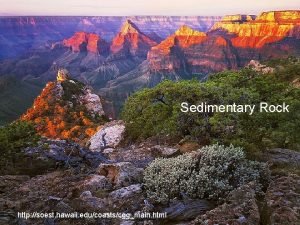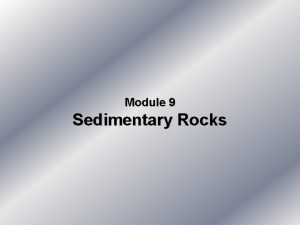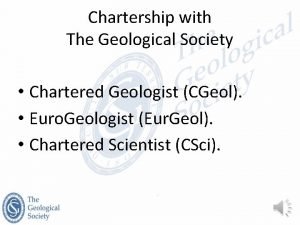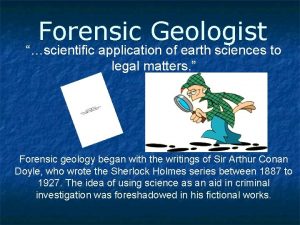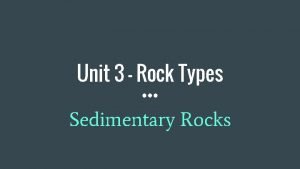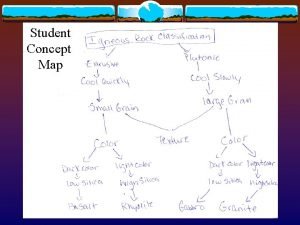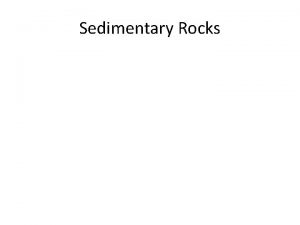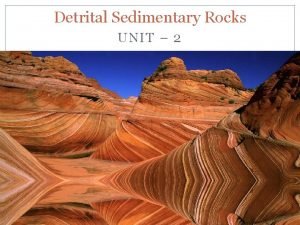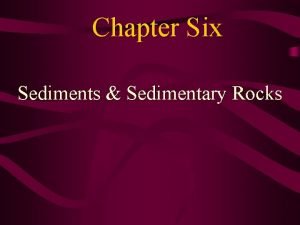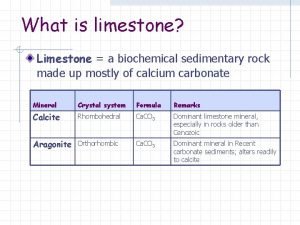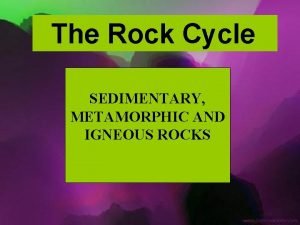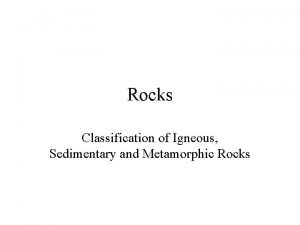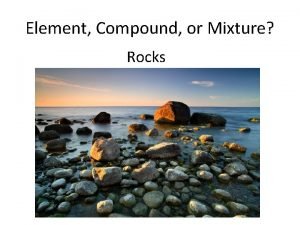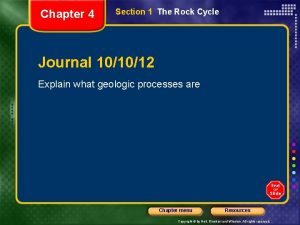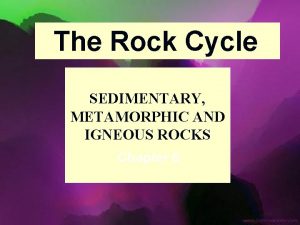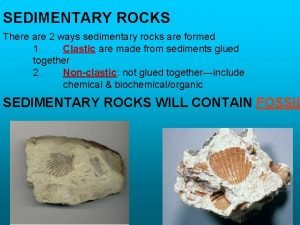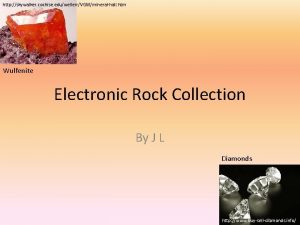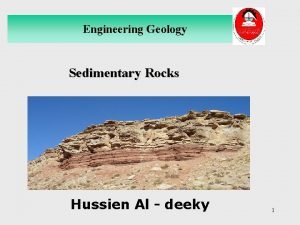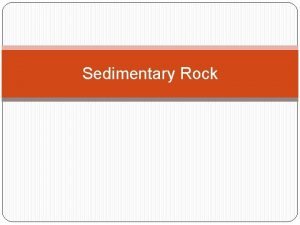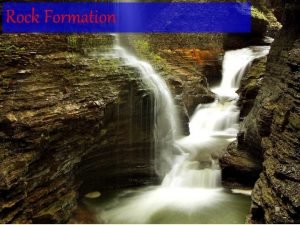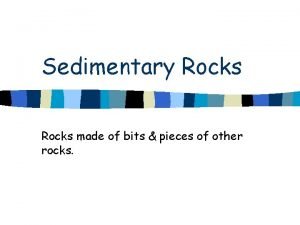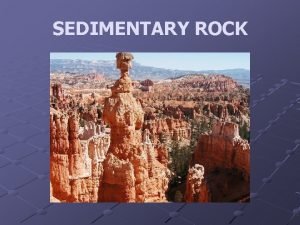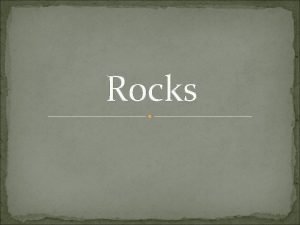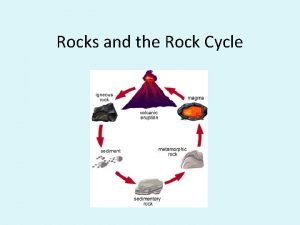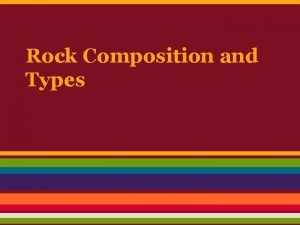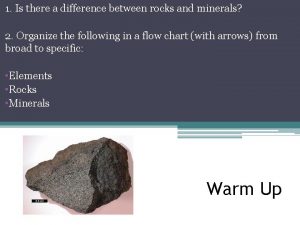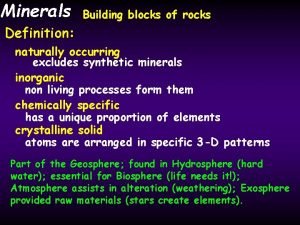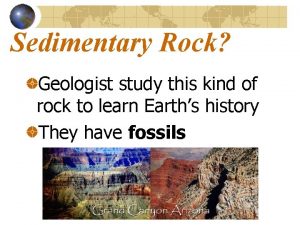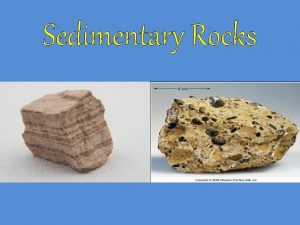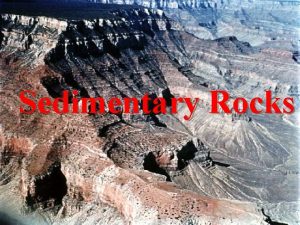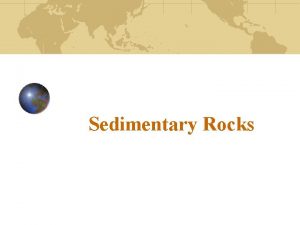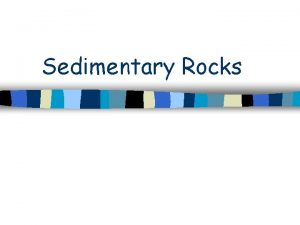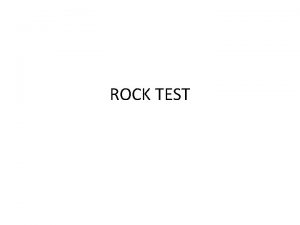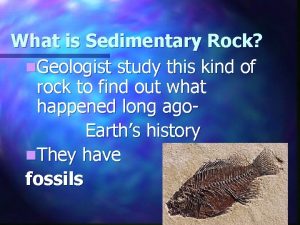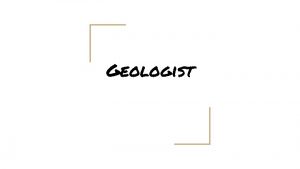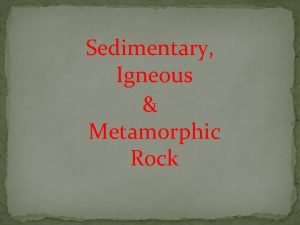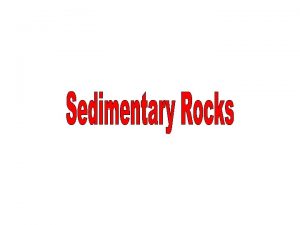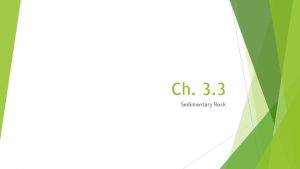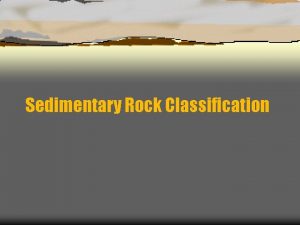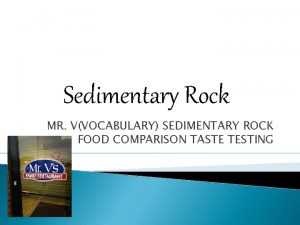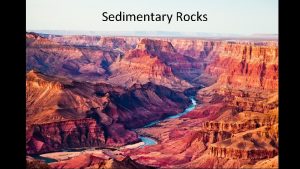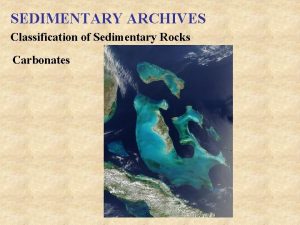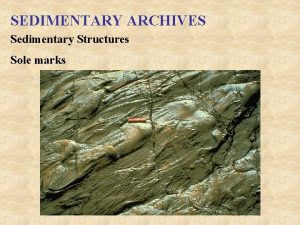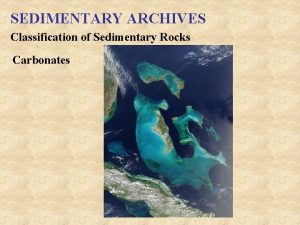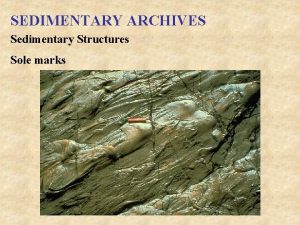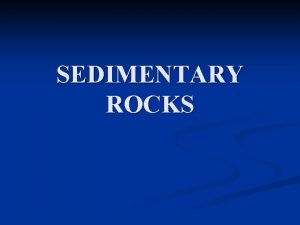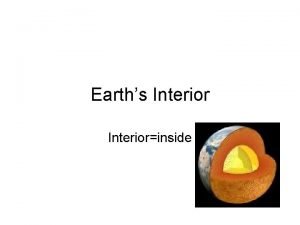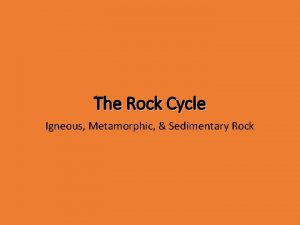Sedimentary Rock Geologist study this kind of rock






































- Slides: 38

Sedimentary Rock? Geologist study this kind of rock to learn Earth’s history They have fossils

An adaptation A characteristic or trait that allows an animal to survive in its environment. 1. A reflex 2. A response 3. An adaptation

What are rocks? They are combinations of minerals

Herbivores These animals get their energy from plants only

Weather An air mass moving into the region where you live will change the ___. season, weather, time

Reproductive System This system is responsible for the making of offspring

Brain This organ controls everything you do. . .

precipitation Moisture that returns to the earth’s surface from the atmosphere.

erosion The transport, moving, of sediments from one place to another by wind, water, glaciers, and gravity.

Excretory System This body system removes liquid and gaseous wastes

Muscular & Nervous System Which 2 body systems work with the skeletal system to move the body?

Photosynthesis The process where a plant makes its food using: -energy from the sun -Water -Carbon Dioxide -Chlorophyll

Carnivores Animals that only eat other animals (meat)

Producers Green plants are organisms that make their own food, they are called consumers, producers, or decomposers

Alveoli Thousands of tiny air sacs in your lungs, which exchange Oxygen for Carbon Dioxide cilia alveoli mucus

Decomposers Organisms, such as insects, fungi, and bacteria, that eat dead and decaying material. consumers, producers, or decomposers

Warm-blooded The animal’s body temperature does not change when the surrounding temperature changes.

Water, carbon dioxide, energy from the sun, chlorophyll Name the four “ingredients” for the process of photosynthesis

leaves What part of the plant makes food? stem leaves roots

Heredity In all organisms, genetic traits such as freckles, eye color, or a dimple are passed on from generation to generation. This is called…

Calories Energy in foods is measured in ____.

Digestive System The food tube ESOPHAGUS Stores Bile GALL BLADDER Food is churned here STOMACH Stores nutrients LIVER

Adapt If an animal can not migrate or hibernate to avoid harsh weather conditions, then it must: die adapt sleep

Predators, Carnivores What kind of mammals have long, sharp pointed teeth?

Weathering The wearing away or breaking down of sediments by wind, moving water, and glaciers.

The sun What is the closest star to planet Earth?

lithosphere This is the hard, solid part of the earth’s crust atmosphere troposphere lithosphere

Gravity The force that keeps planets in orbit around the Sun and the Moon in orbit around the Earth.

Rotation The Sun appears to move across the sky each day. Its rising and setting each day can be explained by the Earth’s _____.

Body System A group of organs that work together is called a _______

veins We take blood to the heart

White Blood Cells We destroy bacteria which invade the body.

Respiratory System Nose, mouth, trachea, lungs, alveoli are all part of the _______ system.

alveoli They take in the carbon dioxide from blood vessels in your lungs, then release oxygen. (Tiny Air Sacs) This is where CO 2 is exchanged for Oxygen.

front This is where two different air masses meet.

Iris The colored part of your eye

Earth’s Tilt & Revolution What causes the seasonal changes on Earth?

Ocean Tides The Moon has the greatest effect on Earth’s ___.
 Can igneous rocks form metamorphic rocks
Can igneous rocks form metamorphic rocks What kind of sedimentary rock is coal
What kind of sedimentary rock is coal Q
Q Life cycle of a rock
Life cycle of a rock How to become a chartered geologist
How to become a chartered geologist Forensic geology definition
Forensic geology definition Douglas wilhelm harder
Douglas wilhelm harder Shale rock classification
Shale rock classification Rock cycle sedimentary
Rock cycle sedimentary Concept map of rocks
Concept map of rocks Indiana limestone
Indiana limestone Clasts detrital minerals
Clasts detrital minerals Lithification
Lithification Is limestone biochemical
Is limestone biochemical Rock cycle
Rock cycle Sedimentary rocks examples
Sedimentary rocks examples Metamorphic
Metamorphic Concept map of minerals and rocks
Concept map of minerals and rocks Is rock an element compound or mixture
Is rock an element compound or mixture Chapter 4 section 3 sedimentary rock answer key
Chapter 4 section 3 sedimentary rock answer key Rock cycle song (sedimentary igneous metamorphic)
Rock cycle song (sedimentary igneous metamorphic) Sedimentary rock properties
Sedimentary rock properties Non example of sedimentary rock
Non example of sedimentary rock Parent rock.
Parent rock. Orange sedimentary rock
Orange sedimentary rock Sedimentary rock
Sedimentary rock Sedimentary rock description
Sedimentary rock description Types of clastic sedimentary rocks
Types of clastic sedimentary rocks A process that squeezes, or compacts, sediments
A process that squeezes, or compacts, sediments Physical properties of sedimentary rocks
Physical properties of sedimentary rocks How do chemical sedimentary rocks form
How do chemical sedimentary rocks form Sedimentary rock characteristics
Sedimentary rock characteristics Process of formation of sedimentary rocks
Process of formation of sedimentary rocks What kind of rock is this
What kind of rock is this Sedimatry rock
Sedimatry rock Characteristics of sedimentary rocks
Characteristics of sedimentary rocks What rock is this
What rock is this Difference between rocks and stones
Difference between rocks and stones Potassium feldspar
Potassium feldspar

